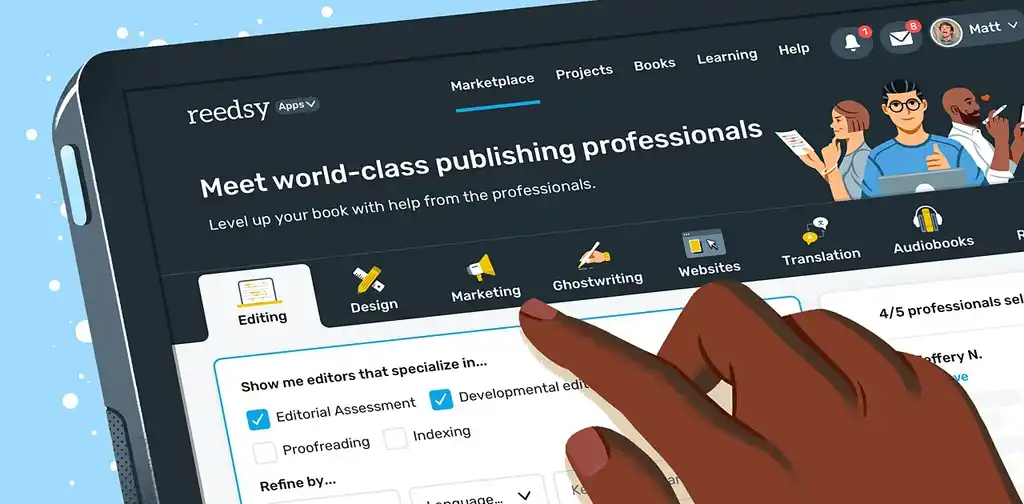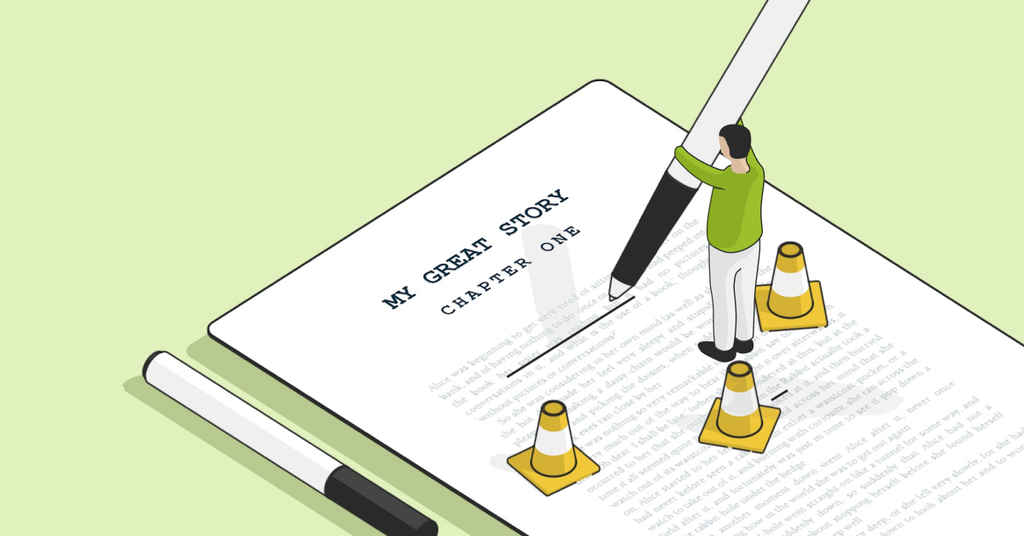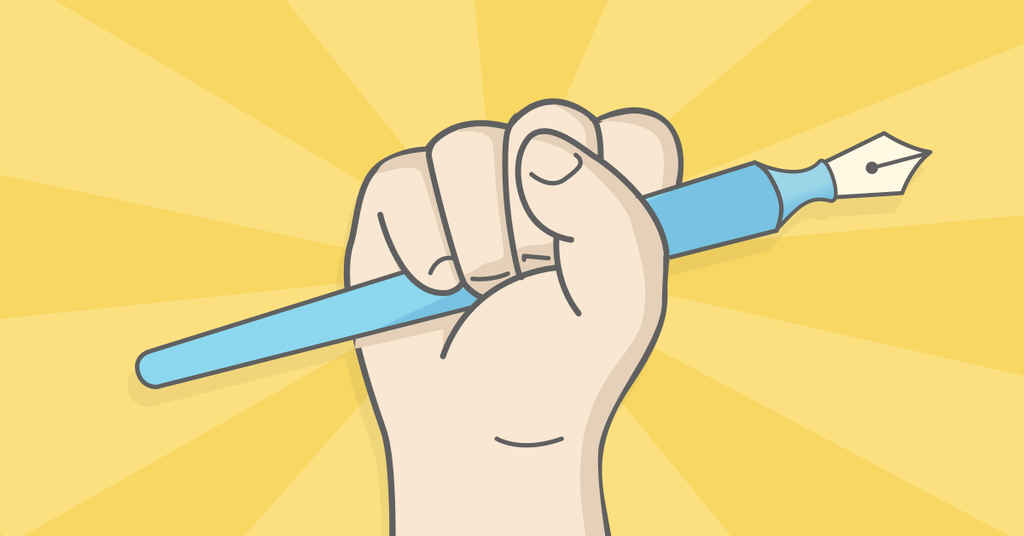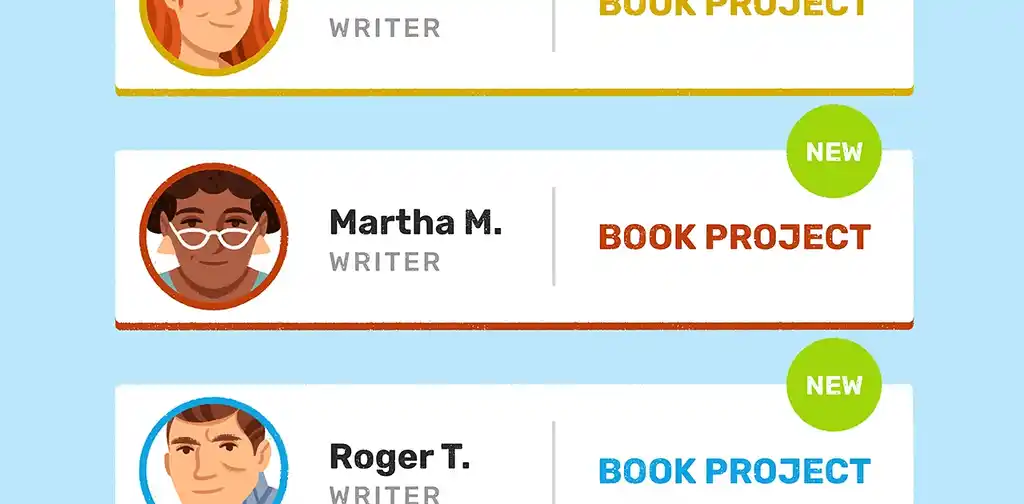Blog •
Posted on Apr 27, 2021
Diversity in Publishing: What Can You Do as an Editor?
Linnea Gradin
The editor-in-chief of the Reedsy Freelancer blog, Linnea is a writer and marketer with a degree from the University of Cambridge. Her focus is to provide aspiring editors and book designers with the resources to further their careers.
View profile →Storytelling is a central tool in human communication. The stories we tell, often in the name of entertainment, are paramount in constructing our perceptions of the world. While the publishing business lies at the heart of the “story industrial complex,” it often struggles to reflect the range of experiences in the community that it serves.
Improving inclusivity in the publishing industry is not only a question of promoting diversity in terms of the voices and stories that we read. It’s also about fostering an environment where a wider group of writers and professionals have the means to succeed.
Literary editors will have spent the past few years engaged in discussions surrounding diversity and inclusion in their industry — perhaps to the point of being overwhelmed. After all, what can one editor, working to make ends meet, do to change the world around them?
In this post, we’ll break down what diversity in publishing looks like and a few actionable steps that almost any editor can take to promote inclusivity and diversity in publishing.
What do we mean when we say diversity?
‘Diversity’ has seemingly become a third-rail issue in almost all aspects of creative life over the past few years. Recent debates on diversity (including the backlash to the split winners of the 2019 Booker Prize and the controversial publication of American Dirt) have focused on racial and ethnic inclusion in the boardroom and on the bookshelf.
Race is indeed important to consider when looking at a more rounded industry, but more broadly, ‘diversity’ is the umbrella term used in the US and UK to address the multiple ways in which people are marginalized and excluded for reasons such as race, ethnicity, religion, culture, sexual orientation, socioeconomic background, disabilities, and neurodiversity.
Because it can cover so many different things, the broad term ‘diversity’ can become a double-edged sword. Grouping different types of people together and calling them diverse reaffirms their marginalized status — that their identities somehow deviate from the norm — and might erase differences within that group. On the other hand, not acknowledging the differences in each group’s lived experiences — for instance, using colorblind language — can mean that manifestations of inequality are swept under the rug and never dealt with.
For these reasons, it’s always good to use ‘diversity’ with intent and clarity. Only when we are clear with what we’re addressing can it lead to real change rather than performative activism.
What does publishing look like today?
A manuscript passes over many desks on its way to becoming a published book. When the people behind those desks only represent a fraction of the population and their experiences, this begins to affect which stories are published and how they’re presented and read.
Lee & Low, in their 2015 and 2019 surveys of the publishing industry, asked how diverse voices can truly be represented if the people who work in publishing are not a diverse group. In their 2019 baseline report, they note that though publishing professionals acknowledged the need to diversify, not much has changed since their 2015 survey — publishing is still majority white (76%), cis-female (74%), straight (81%), and non-disabled (86%), with variations depending on which department or employment level you’re looking at.
According to the Rethinking Diversity in Publishing report, this skew leads to assumptions about the audience and the market. Books in the West are largely directed towards white, middle-class readers. As a result, the industry caters primarily to this group, ultimately affecting writers, content, how resources are allocated, as well as how people evaluate ‘quality.’
Improving inclusivity is not about culling veterans with 15 years of experience to make space for inexperienced college grads in the name of diversity. Instead, the general consensus is to evaluate our existing systems and structures — to better understand and address how certain ‘normal’ practices can, in fact, be alienating to all those qualified writers and editors who don’t belong to publishing’s traditional demographic.

JOIN OUR NETWORK
Supercharge your freelance career
Find projects, set your own rates, and get free resources for growing your business.
How to address inclusivity and diversity as an editor
You don’t have to be the senior editor or the CEO of a major publishing house to create change. High-impact decisions on hiring processes and salaries may be out of your hands, but there are plenty of things you can do to create a more welcoming and inclusive publishing culture. These tips apply regardless of whether you’re an in-house or freelance editor.
Having a say in editorial decisions, as well as individual line editing, means that you’re uniquely positioned to support marginalized writers who may encounter obstacles on their path to publication. A good editor would ideally pick up on potentially harmful practices naturally, regardless of what type of editor they are, but subconscious biases sometimes manifest as a lack of attention.

With this in mind, it’s always best to be extra vigilant about how you might help the wider publishing community through the many small decisions you make in your daily work.
1. Watch out for careless language use
A large part of your job is to make sure that the writer you’re working with is writing with intent. This is true regardless of who the writer is or what they’re writing about. The thing with language, though, is that our vernacular is such a huge part of our everyday lives that even the most experienced editor sometimes doesn’t ask themselves where it’s coming from.
Established turns of phrases or expressions are sometimes used without a second thought, but they may come with a history that can be harmful and hurtful to some communities. Language is also constantly changing, so some terms might have worked a few years ago but would seem outdated and problematic today. Make sure that you keep up-to-date with changing conventions and social discourse and guide authors in the same direction, using appropriate terminology and style throughout (without removing their unique voice, of course).
Things you can look out for:
- Incorrect use of pronouns and genders, or assumptions about sexuality;
- Colorblind language, which implies that race has no impact on someone’s experience;
- Use of slurs or hate speech;
- Default othering based on skin color, culture, or religion;
- Ableism, ageism, and body shaming.
2. Watch out for stereotypes and flat characters
Any editor worth their salt will know to watch out for flat and stereotypical characters. But special care should be taken to ensure that marginalized characters are presented as complex human beings. This has historically not always (read: rarely) been the case. By watching out for lazy simplifications, editors already play a pivotal role in changing larger, harmful narratives.
Note that, to avoid stereotypes and tired tropes, authors sometimes inadvertently create equally simplistic characters on the other end of the spectrum. Black male characters, for instance, are frequently made to balance the knife-edge of being gangsters, on one hand, and mystical founts of folksy wisdom on the other. This often places marginalized characters in a binary bind where they are either entirely one thing or entirely another but aren't afforded the complexity and contradiction that norm-conforming characters are.

This isn’t to say that every tertiary character needs pages of backstory that illuminates their rich personal history — sometimes, all you need is a few intriguing details that allude to something deeper under the surface.
3. Flag any inaccurate portrayals of minorities and recommend ways forward
As part of checking the language use and watching out for flat characters, you may also want to watch out for any inaccuracies in the text, especially in the portrayal of a minority character’s culture or community. Though copy editors aren't fact-checkers or proofreaders, these are things that might affect the overall presentation and cohesion of the text.
If you’re not sure about whether the portrayal is accurate or not, make a note of it so that you can come back to it later when you have more information or can recommend the author to a copy editor who might know the topic better. If you do bump into writing that you’re not personally sure about, it could also be a good idea to turn your author towards a beta or sensitivity reader.
💡 Top tip: When in doubt, consult Conscious Style Guide!
Knowing what you don’t know is an important skill as an editor, so don’t be afraid to get another perspective on the text. If you’re unsure about a small detail, perhaps contact an editor or writer who would know better. And if you feel that a different editor would best serve the manuscript on the next pass, then delegating might be the most responsible way forward. Besides, being able to recommend a writer to a suitable editor — even if that editor is not you — will help build your professional reputation and network.
4. Don’t adhere to old molds of writing
As an editor, you may be in the position to decide whether or not you want to take on a project based on the qualities you see in it. ‘Quality,’ however, is a highly subjective measurement that depends on the eye of the beholder and which is constantly changing.
As a reader, you may have been weaned on a rich diet of Austen, Dickens, and Nabokov, but writing has always been dynamic: trying to fit all writing into these molds is to do your craft a disservice. Great editors will examine their assumptions about what good writing looks like. They will understand that this is not a call to lower their standards but expand them to include more varied forms of expression and storytelling.
Writing that falls outside of the box of conventional English-language writing can still efficiently and evocatively communicate a story to the reader. Whether it’s written in dialect, departs from traditional storytelling structures, or uses unfamiliar references, you can use your position as an editor to celebrate those differences without minimizing or over-explaining them. We often don’t give readers enough credit for being able to figure things out for themselves. As long as the story is strong, readers will want to engage with the work.
5. Look for stories that reflect all types of lived experiences
Books written by and about people of color, LGBTQ+ authors, disabled, or neurodiverse authors are increasingly seen on bestseller lists and nominated for awards. This is largely a good thing — creating more space for representation and a variety of voices in the stories that are available to read.

However, in Writing the Future, a report focusing on Black and Asian writers in the UK, writers of color note that they feel that their writing has been made to reproduce racial stereotypes by well-meaning (white, middle-class) editors. Stories of hardship, suffering, courage, or violence that pull on readers’ heartstrings and reinforce pre-formed ideas about marginality are the ones that have traditionally sold well. As Zora Neale Hurston put it, “because publishers want to sell books, they publish stories that conform to those stereotypes, reinforcing white [and norm-confirming] readers’ expectations and appetites.”
As an editor, you can help by reflecting on what you expect regarding minority authors’ writing or stories that feature minority characters. We need stories representing the full spectrum of human experiences — from the mundane to the heartbreaking to the triumphant. Hardship is indeed a fact of life for many, but it’s not the only story worth putting out into the world.
6. Watch out for trauma porn
On a related note, you should keep a watchful eye out for so-called ‘trauma porn.’ ‘Trauma porn’ is a term that describes excessively showcasing a group’s pain and trauma for the sake of entertainment. This is especially prevalent in narratives that include marginalized communities, and it’s a subject that became a major topic of discussion with the publication of American Dirt.
So what do you do about this as an editor? To avoid trauma porn, consider what the addition of violence and pain brings to the narrative. Does the story need it to make its point? Would the story still work without it?
In addition to the work you do with the texts you’re editing, there are plenty of things you can do as a colleague to contribute to a more inclusive publishing culture.
Q: What proactive steps ensure inclusivity and authentic representation in publishing projects?
Suggested answer
Inclusivity and diversity are important to me. I'm part of several minorities, but I know I can't speak for all minorities or for all members who happen to be in the same minority group as I am.
I start by actively advertising that I'm looking for inclusive projects. Whenever I collaborate on books in which one or more characters is part of a minority group, I take time to talk to the author about what this means for the book and how that character's identity affects the story. It's important for me to do some outside research as well, even if that's just a few minutes searching google. Some books have casual inclusivity while others have very intentional inclusivity, and we need both for different reasons.
I do a lot of character analysis when I work on story editing, which is a great time to talk about whether a book could be more inclusive and what that looks like. Making a book inclusive doesn't have to be hard. We've all heard "write what you know," but people can get to know new things—that's called learning.
I work on children's books, primarily, and I believe that every child should be able to find characters who are like them.
Sirah is available to hire on Reedsy ⏺
7. Understand your own position
Start by reflecting on where you exist in relation to the different people you will encounter through work. This means acknowledging the relative privileges and resources you may or may not have, based on your professional qualifications and your specific background.
Lee & Low’s 2019 report indicates that roughly 85% of editors are white. If you belong to that majority group, it’s helpful to recognize that there might be situations where being white will afford you privilege and easier access to certain spaces of influence, such as boardrooms or seminars, that equally qualified people might be excluded from.
If you belong to a group under-represented in publishing, you may feel a lot of pressure to be the voice of (or provide opportunities for) those who face similar obstacles as you. This can be a lot of stress when you’re already putting in the work to develop your career, but there are things editors of any background can do once they’re on the publishing ladder.
In the end, though your abilities as an editor should always come first, having a clear and honest reflection on your position and the overall structure of publishing will be of considerable help if you truly want to make a difference. Only when we recognize that we’re all part of the problem can we become part of fixing it.
8. Get informed
Invest some time learning about the past and present challenges faced by different people in the publishing industry and society at large. Doing your own research is essential. Government reports occasionally offer a good place to start, though recent UN critique against a UK report on race shows that this is not always the case. Instead, try to look for reliable, independent sources that are written by, for, and about the marginalized community you’re learning about and proactively seek out to learn about what has already been done in these areas and what issues remain.
For example, you might start with:
- The Lee & Low report and the Rethinking 'diversity' in publishing report for a general overview of diversity;
- Articles and resources published by Disability Rights and Education Fund such as Media and Disability;
- Books like bell hooks’ Black Looks for background information on the representation of people of color in the media.
Avoid asking marginalized people of different groups to educate you on the obstacles that they may or may not face, for free. While this is often well-intentioned, it may place additional responsibility and pressure on that person without compensating them for their time and effort.
9. Listen
As an extension to getting informed, it’s important to listen if your colleagues or fellow freelancers raise a particular issue or obstacle they face in their daily work lives. If you don’t recognize the situation they’re describing, ask yourself why you might have different perspectives and experiences and how you can help address the problem. Remember that just because you aren’t facing a problem doesn’t mean the problem doesn’t exist.
Even more importantly, listen if a colleague or author brings up something that you yourself might have done to make them uncomfortable. It’s never pleasant to know that you’ve caused someone pain and the natural reaction is often to get defensive. Defensiveness, however, is never helpful as it stops you from looking openly and honestly at the problem and thus from moving forward. Even if you don’t immediately agree, recognize that it took a lot of courage to come forward and treat their grievance with empathy and care.
10. Use your voice to speak out against injustices
Most editors these days are working on a freelance basis, making it difficult to put pressure on decision-makers to change the publishing culture. Even so, the publishing community does hold some public sway on the practices of publishing, especially when they join forces.
The beautiful thing about this global and digital age is that you don’t have to be in-house to support different initiatives. In addition to signing petitions, authors and publishing professionals use social media to engage with and discuss current issues that the industry is facing. For instance, Simon & Schuster canceled their plans to publish a book by one of the police officers who shot Breonna Taylor after widespread public critique. And similarly, dozens of Hachette employees staged a walk-out to (successfully) protest their scheduled Woody Allen memoir.

Using whatever platform you have, you can raise awareness of obstacles that you’re personally facing or act as an ally for colleagues. You can also speak out when you notice microaggressions or structural issues in your day-to-day work life to be part of creating a safe and welcoming environment for everyone.
11. Offer to mentor someone
Speaking out is incredibly important, but mentoring someone is a way to turn talk into action. Suppose you’re in the position to offer up a little bit of your time and expertise to someone who might not be able to pay for expensive publishing courses or to miss out on a well-paying job for the sake of an internship. In that case, this is an excellent way to slowly but surely change the make-up of publishing. As Chris Jackson, vice president of OneWorld, puts it: “Publishing, it turns out, is a job you can learn while doing, if people are willing to help a little.”
12. Seek new voices as a freelance editor
Self-publishing has increased exponentially in recent years, not least because of a need to fill existing gaps in representation and voices within traditional publishing. If you have experience editing, taking on freelance jobs to help indie authors get their stories out into the world is an excellent way of improving diversity and making publishing more inclusive. Not only does this remove some of the obstacles that minority authors and professionals face in getting their voices heard, but it increases the chance of more readers being able to see themselves in the books they read.
We hope you’ve found these tips helpful. Creating a more inclusive and diverse publishing industry won’t be an overnight process, but with your help, the change will come quicker than previous generations may have expected.

